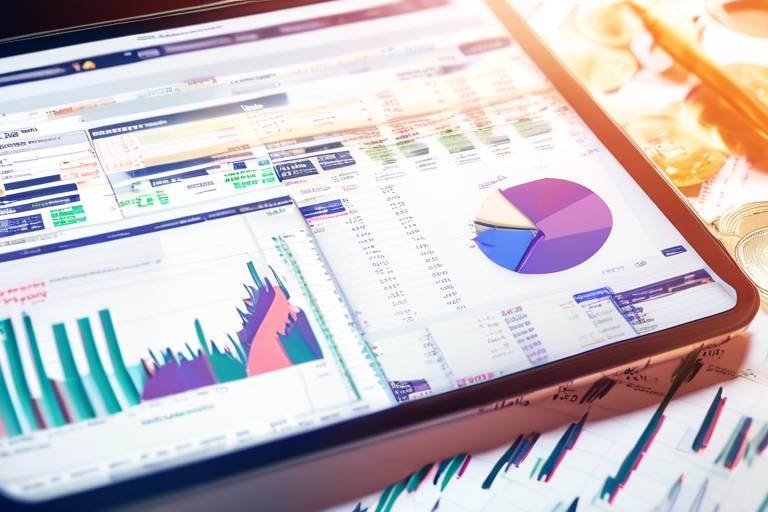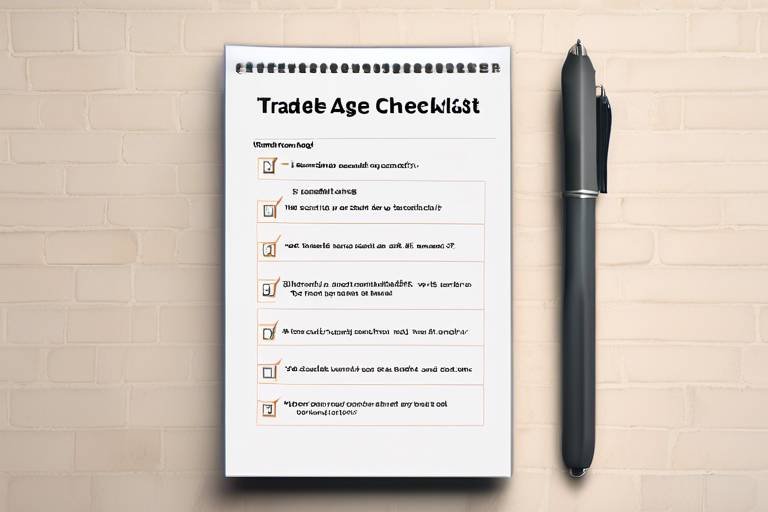How to Stay Disciplined as a Crypto Trader
In the fast-paced world of cryptocurrency trading, maintaining discipline is not just a luxury; it's a necessity. The market is notorious for its volatility, which can lead even the most seasoned traders to make impulsive decisions. So, how can you stay grounded amidst the chaos? This article explores essential strategies and practices that can help crypto traders maintain discipline, manage risk, and make informed decisions in a volatile market.
Market volatility is a defining characteristic of cryptocurrency trading. Prices can swing dramatically within minutes, and this unpredictability can be both thrilling and terrifying. Recognizing the impact of volatility on your trading strategies is crucial for maintaining discipline and making informed decisions. When the market is on a roller coaster, it’s easy to get swept away by emotions. However, understanding that volatility is simply a part of the game can help you remain focused and stick to your strategy.
Establishing specific, measurable, achievable, relevant, and time-bound (SMART) goals can provide direction and motivation. Think of your trading journey as a road trip; without a clear destination, you might find yourself lost or making unnecessary detours. By setting clear goals, you can remain disciplined in your approach and avoid impulsive decisions that could derail your progress. Whether you're aiming for a specific profit target or a certain number of trades per week, having defined goals keeps you accountable.
Differentiating between short-term and long-term trading goals is essential. Short-term goals might involve making quick profits from market trends, while long-term goals focus on building wealth over time. Understanding these distinctions allows traders to develop strategies that align with their risk tolerance and investment horizon. This alignment promotes consistent discipline, as you’ll be less likely to chase fleeting opportunities that don’t fit your overall strategy.
Short-term strategies often involve quick trades based on market trends. Think of it as sprinting in a marathon; you need to be agile and quick on your feet. Understanding these strategies can help traders stay focused and disciplined in fast-paced environments. For instance, using technical analysis to identify entry and exit points can keep you grounded and prevent emotional decision-making.
A long-term vision encourages traders to withstand market fluctuations and stick to their strategies. Imagine planting a tree; it takes time to grow and bear fruit. Similarly, a long-term approach fosters discipline and patience over time, allowing you to ride out the inevitable ups and downs of the market without panicking.
Conducting regular performance reviews allows traders to assess their strategies, identify weaknesses, and refine their approaches. Just like an athlete reviews their game footage, you should analyze your trades to reinforce disciplined trading habits. This practice not only helps you learn from your mistakes but also keeps you focused on your long-term goals.
Implementing effective risk management techniques is vital for maintaining discipline. It helps traders protect their capital and make rational decisions, even in volatile conditions. Without a solid risk management plan, you might find yourself making hasty decisions that lead to significant losses.
Diversifying investments across different cryptocurrencies can mitigate risk. Think of it as not putting all your eggs in one basket. By spreading your investments, you can reduce the impact of market fluctuations on your portfolio, promoting disciplined trading behavior.
Using stop-loss orders can help traders limit potential losses. This tool is like a safety net; it ensures you adhere to your trading plans and maintain discipline even during market downturns. By automatically selling a cryptocurrency when it reaches a certain price, you can prevent emotional decision-making that often leads to bigger losses.
Managing emotions is essential for disciplined trading. Recognizing emotional triggers can help traders avoid rash decisions and maintain focus on their strategies. In the heat of the moment, it’s easy to let fear or greed dictate your actions. However, developing emotional awareness can be your greatest ally in maintaining discipline.
Understanding personal emotional triggers allows traders to develop coping mechanisms. For example, if you notice that you tend to panic sell during market dips, you can create a plan to stay calm and stick to your strategy. This self-awareness fosters a disciplined mindset and reduces the likelihood of impulsive trading behavior.
Incorporating mindfulness techniques can enhance emotional control. Just as a deep breath can calm a racing heart, mindfulness helps traders stay calm and focused during market fluctuations. Techniques such as meditation or simply taking a moment to reflect can support disciplined trading practices and help you make rational decisions.
- What is the most important factor in staying disciplined as a crypto trader? Understanding your emotional triggers and having a solid plan in place are crucial for maintaining discipline.
- How can I manage risk effectively? Diversification and setting stop-loss orders are effective strategies for managing risk in crypto trading.
- Why is it important to set both short-term and long-term goals? Short-term goals help you stay focused on immediate opportunities, while long-term goals ensure you remain committed to your overall strategy.

Understanding Market Volatility
Market volatility is like the wild rollercoaster ride of the financial world, especially in cryptocurrency trading. If you’ve jumped into the crypto space, you’ve probably experienced the dizzying highs and gut-wrenching lows that can happen in a matter of minutes. This volatility is a defining characteristic of the crypto market, and understanding it is crucial for any trader who wants to maintain discipline and make informed decisions.
So, what exactly is market volatility? In simple terms, it refers to the degree of variation in trading prices over time. High volatility means that the price of a cryptocurrency can change rapidly in a short period, while low volatility indicates more stable prices. For traders, this can create both opportunities and risks. Imagine trying to balance on a seesaw that’s constantly shifting—one moment you’re on top, and the next, you’re scrambling to regain your footing.
To navigate this turbulent landscape, it’s essential to recognize how volatility impacts trading strategies. Here are a few key points to consider:
- Price Fluctuations: Prices can swing dramatically, leading to potential gains as well as significant losses.
- Market Sentiment: News, social media, and global events can drive prices up or down, often unpredictably.
- Timing is Everything: Quick decision-making is crucial; the longer you wait, the more the market can change.
Understanding these factors can help you formulate strategies that align with your risk tolerance. For instance, if you’re someone who prefers stability, you might choose to invest in less volatile assets or employ strategies that capitalize on gradual price movements rather than rapid shifts. On the other hand, if you thrive on excitement and are willing to take risks, you might engage in day trading or swing trading, where you can take advantage of short-term price changes.
Ultimately, recognizing and adapting to market volatility is a key element of disciplined trading. It’s about finding a balance between seizing opportunities and protecting your investments. By staying informed and maintaining a clear strategy, you can navigate the ups and downs of the crypto market with greater confidence and control. Remember, in the world of crypto, staying grounded amidst the chaos is what sets successful traders apart from the rest.

Setting Clear Goals
When it comes to crypto trading, is absolutely essential. Think of your goals as the north star guiding your trading journey. Without them, you might find yourself lost in the chaotic sea of market fluctuations, making impulsive decisions that could lead to significant losses. Establishing specific, measurable, achievable, relevant, and time-bound (SMART) goals can provide the direction and motivation you need to stay disciplined.
First off, let’s break down what SMART goals really mean. Specific goals are clear and well-defined. Instead of saying, “I want to make money,” try something like, “I want to earn a 20% return on my investment within the next three months.” This specificity gives you a target to aim for. Next, measurable goals allow you to track your progress. If your goal is to increase your portfolio by 20%, you can easily measure how close you are to achieving that. Achievable goals are realistic. While it’s great to aim high, setting unattainable goals can lead to frustration and burnout. Relevant goals align with your overall trading strategy and personal circumstances. Finally, time-bound goals have a deadline, which creates a sense of urgency and encourages you to take action.
Now, it’s important to differentiate between short-term and long-term goals. Short-term goals can be focused on immediate gains, such as making a profit from a specific trade within a week. In contrast, long-term goals might involve building a stable portfolio over several years. By understanding the difference, you can tailor your strategies accordingly. For example, if your short-term goal is to capitalize on a trending cryptocurrency, you might decide to engage in day trading. However, if your long-term vision is to hold onto a diverse range of cryptocurrencies to weather market volatility, your approach will be vastly different.
To keep yourself accountable, consider tracking your goals in a simple
| Goal Type | Description | Deadline | Status |
|---|---|---|---|
| Short-term | Earn a 10% return on investment | 1 month | In Progress |
| Long-term | Build a diversified portfolio worth $50,000 | 2 years | Not Started |
Regularly reviewing this table can keep your goals front and center, reminding you of what you’re working towards. By setting clear goals, you’re not just creating a roadmap for your trading activities; you’re also fostering a disciplined mindset. This discipline is crucial in a market that can often feel like a rollercoaster ride. Remember, the more defined your goals are, the easier it will be to make informed decisions and resist the temptation to stray from your strategy.
In conclusion, setting clear goals is more than just a good practice; it’s a foundational element of successful trading. By establishing SMART goals and regularly reviewing them, you can navigate the tumultuous waters of crypto trading with confidence and discipline.
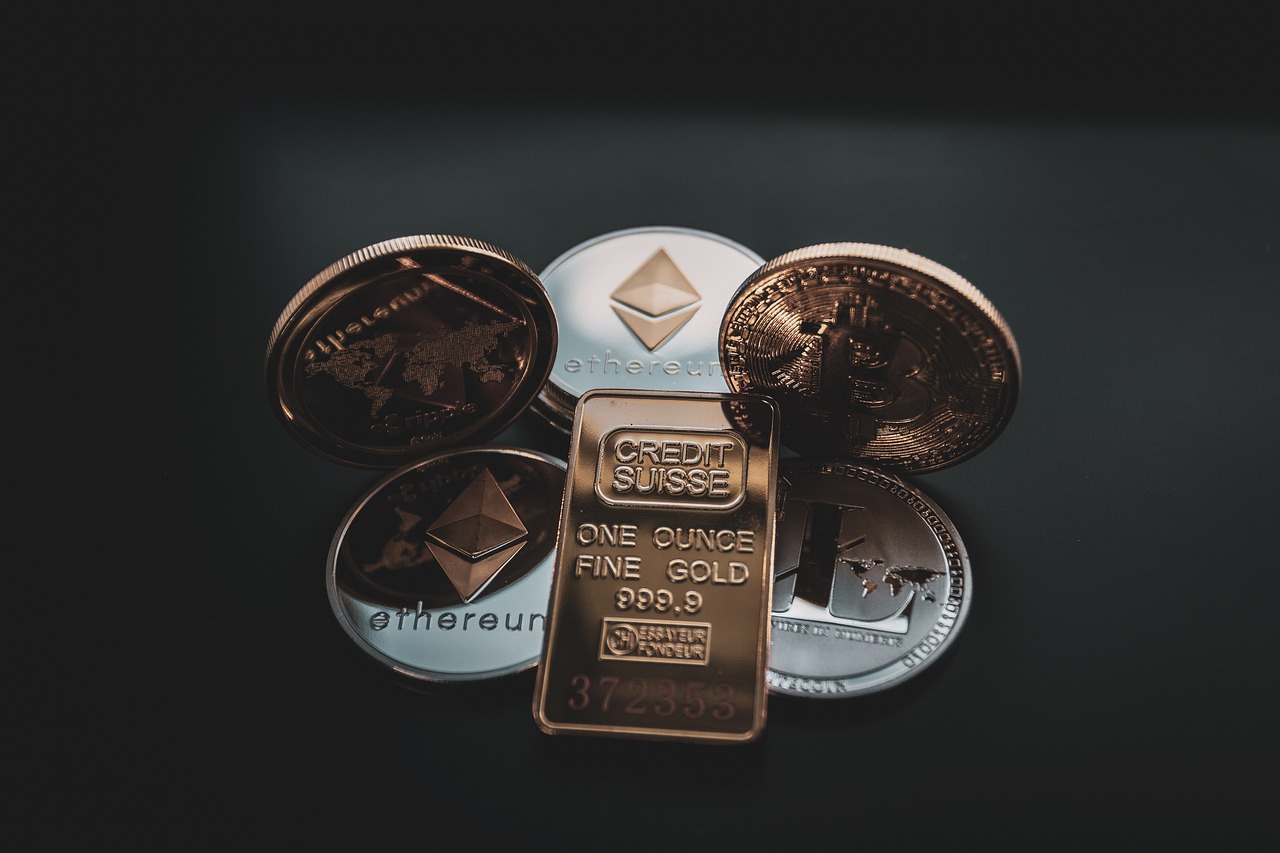
Short-term vs Long-term Goals
When it comes to trading in the cryptocurrency market, distinguishing between short-term and long-term goals is crucial for maintaining discipline. Think of short-term goals as sprinting in a race, where quick decisions and rapid movements are necessary, while long-term goals resemble a marathon, requiring endurance, strategy, and patience. Both approaches have their merits, but understanding how to balance them can significantly enhance your trading performance.
Short-term goals often focus on immediate gains and quick trades. These can be driven by market trends, news events, or sudden price movements. For example, a trader might aim to make a profit within a few hours or days based on a technical analysis of price charts. However, the fast-paced nature of short-term trading can lead to impulsive decisions if not managed correctly. Traders may find themselves chasing after every market fluctuation, which can be exhausting and counterproductive.
On the other hand, long-term goals encourage traders to take a step back and view the bigger picture. This approach involves holding onto investments for months or even years, allowing traders to ride out the inevitable market fluctuations. By establishing a long-term vision, traders can develop a strategy that aligns with their risk tolerance and investment horizon, fostering a sense of discipline. For instance, instead of reacting to daily price changes, a long-term trader might focus on the overall growth potential of a cryptocurrency based on its fundamentals.
To effectively manage both short-term and long-term goals, consider the following strategies:
- Define Your Time Frame: Decide how long you want to hold onto an asset before making a trade. This clarity will help you avoid emotional decisions.
- Allocate Your Capital: Determine how much of your total investment will go into short-term trades versus long-term holdings. This ensures that you have a balanced approach.
- Regularly Reassess Your Goals: Markets change, and so should your strategies. Periodically review your goals to ensure they still align with your market outlook.
In conclusion, understanding the distinction between short-term and long-term goals is essential for any crypto trader. By developing strategies that cater to both aspects, traders can maintain discipline and make informed decisions that align with their overall investment strategy. Ultimately, the key is to find a balance that works for you, allowing you to capitalize on market opportunities while staying true to your long-term vision.
Q: How do I determine if I should focus on short-term or long-term trading?
A: It depends on your risk tolerance, investment objectives, and time commitment. If you prefer quick profits and can dedicate time to monitor the market, short-term trading may suit you. Conversely, if you want to invest with less frequent trading and can tolerate market volatility, long-term trading might be better.
Q: Can I combine both short-term and long-term trading strategies?
A: Absolutely! Many traders find success by employing a combination of both strategies, allowing them to benefit from immediate market movements while also investing in assets for the long haul.
Q: What tools can help me track my trading goals?
A: Utilizing trading journals, portfolio management apps, and performance analytics tools can significantly help you track your progress and stay disciplined in achieving your trading goals.

Defining Short-term Strategies
When it comes to short-term trading strategies, the goal is to capitalize on market movements that can occur within a matter of hours or days. This fast-paced environment demands a keen understanding of market trends and a readiness to act swiftly. Traders often find themselves in a whirlwind of price fluctuations, and having a solid strategy in place is crucial. So, how can you define your short-term strategies effectively?
First and foremost, it's essential to identify market trends. This involves analyzing price charts and recognizing patterns that indicate potential movements. For instance, traders often utilize technical indicators such as Moving Averages or the Relative Strength Index (RSI) to gauge market momentum. These tools can provide insights into whether a cryptocurrency is overbought or oversold, helping you make informed decisions.
Another vital aspect of short-term strategies is setting clear entry and exit points. Before executing a trade, you should determine at what price you will enter and exit the market. This not only helps in locking in profits but also in minimizing losses. For example, if you decide to buy Bitcoin at $30,000, you might set a target to sell at $32,000 while simultaneously placing a stop-loss order at $29,500. This disciplined approach ensures that you stick to your plan, even when emotions run high.
Additionally, traders should consider the importance of timing. In the world of cryptocurrency, timing can be everything. Events such as regulatory announcements, technological upgrades, or market sentiment shifts can lead to significant price movements. Staying updated with news and events can give you an edge. For example, if a major exchange announces the listing of a new altcoin, it could lead to a surge in trading volume and price. Being aware of these factors can help you make timely decisions.
Moreover, it’s crucial to maintain a risk-reward ratio that aligns with your trading style. A common rule of thumb is to aim for a risk-reward ratio of at least 1:2. This means that for every dollar you risk, you should aim to make at least two dollars in profit. By adhering to this principle, you are more likely to come out ahead in the long run, even if some trades don’t go as planned.
Lastly, keeping a trading journal can significantly enhance your short-term trading strategies. Documenting your trades, including the rationale behind each decision, can help you identify patterns in your trading behavior. Over time, this self-reflection can lead to improved decision-making and greater discipline. You might find that certain strategies work better for you than others, allowing you to refine your approach continuously.
In conclusion, defining short-term strategies in cryptocurrency trading is about being proactive, informed, and disciplined. By understanding market trends, setting clear entry and exit points, timing your trades, maintaining a favorable risk-reward ratio, and keeping a trading journal, you can navigate the volatile waters of crypto trading with greater confidence. Remember, every trade is a learning opportunity, so embrace the journey!
- What is a short-term trading strategy? - A short-term trading strategy involves making trades that capitalize on market movements within a brief time frame, usually from minutes to days.
- How do I identify market trends? - You can identify market trends by analyzing price charts and using technical indicators to gauge momentum.
- What is a good risk-reward ratio for trading? - A common recommendation is to maintain a risk-reward ratio of at least 1:2.
- Why is a trading journal important? - A trading journal helps you track your trades, understand your decision-making process, and improve your strategies over time.

Establishing Long-term Vision
When it comes to cryptocurrency trading, having a long-term vision is akin to having a lighthouse guiding you through a stormy sea. Without this vision, traders can easily get swept away by the unpredictable waves of market fluctuations. A long-term perspective encourages traders to look beyond the immediate noise and focus on their overarching goals. This vision is not just about setting a distant target; it’s about understanding the journey and the strategies that will lead you there.
One of the key aspects of establishing a long-term vision is recognizing that cryptocurrency markets can be highly volatile. Prices can soar and plummet within minutes, which can trigger emotional responses that lead to impulsive decisions. However, by maintaining a long-term outlook, traders can develop the patience necessary to withstand these fluctuations. Imagine planting a tree; it takes time to grow, but with consistent care and attention, it will eventually bear fruit. Similarly, a long-term approach in trading allows you to weather short-term storms and focus on the bigger picture.
To effectively establish a long-term vision, consider the following strategies:
- Research and Education: Continuously educate yourself about the cryptocurrency landscape. Understanding the technology, market trends, and potential future developments can help you make informed decisions.
- Setting Milestones: Break down your long-term goals into smaller, manageable milestones. This will not only make your journey feel less overwhelming but also allow you to celebrate small victories along the way.
- Regular Reflection: Periodically assess your progress towards your long-term goals. This reflection can help you adjust your strategies as needed, ensuring that you remain on track.
Moreover, having a long-term vision fosters a sense of discipline that is crucial for successful trading. It encourages you to stick to your trading plan and resist the urge to make hasty decisions based on short-term market movements. Think of it as a marathon rather than a sprint; those who pace themselves and remain focused on their end goal are more likely to succeed in the long run.
In conclusion, establishing a long-term vision is not merely about setting lofty goals; it’s about cultivating a mindset that prioritizes patience, education, and reflection. By doing so, traders can navigate the turbulent waters of the cryptocurrency market with greater confidence and discipline, ultimately leading to more informed and rational trading decisions.
Q: Why is a long-term vision important in crypto trading?
A: A long-term vision helps traders maintain focus amidst market volatility, allowing them to make informed decisions rather than impulsive ones.
Q: How can I establish a long-term vision?
A: You can establish a long-term vision by conducting thorough research, setting achievable milestones, and regularly reflecting on your progress.
Q: What role does discipline play in achieving long-term goals?
A: Discipline is crucial as it helps traders adhere to their strategies, resist emotional trading, and stay committed to their long-term objectives.

Regular Performance Review
Conducting regular performance reviews is not just a good practice; it's a vital component of successful crypto trading. Imagine trying to navigate a ship without a compass. That’s what trading without reviewing your performance feels like. These reviews provide a structured way to evaluate your trading strategies, assess their effectiveness, and identify areas for improvement. By consistently analyzing your trades, you can pinpoint what works and what doesn’t, allowing you to make informed adjustments to your approach.
One key aspect of performance reviews is the ability to track your trading metrics. This includes examining your win/loss ratio, average return per trade, and overall profitability. By keeping a detailed record of these metrics, you can visualize your trading journey and make data-driven decisions. Here’s a simple table to illustrate some essential metrics you might want to track:
| Metric | Description | Importance |
|---|---|---|
| Win/Loss Ratio | Number of winning trades vs. losing trades | Helps assess overall trading effectiveness |
| Average Return per Trade | Average profit or loss made on each trade | Indicates the profitability of your trading strategy |
| Maximum Drawdown | Largest peak-to-trough decline in your portfolio | Measures risk and helps manage emotional responses |
In addition to tracking metrics, it’s crucial to maintain a trading journal. This journal should include details about each trade, such as the rationale behind the decision, the emotions felt during the trade, and the outcome. Reflecting on these entries can reveal patterns in your behavior and decision-making process. Are you more likely to make impulsive trades when the market is volatile? Do you tend to hold onto losing positions longer than you should? Recognizing these patterns can significantly enhance your discipline as a trader.
Furthermore, setting aside time for these reviews is essential. Whether it’s weekly, bi-weekly, or monthly, having a dedicated time slot ensures that you stay committed to this practice. During these sessions, ask yourself some critical questions:
- What were my most successful trades, and what can I learn from them?
- Which trades did not go as planned, and why?
- Am I sticking to my trading plan, or am I deviating due to emotions?
By regularly assessing your performance, you not only reinforce your discipline but also cultivate a growth mindset. Each review becomes an opportunity to learn and evolve as a trader. Remember, trading is a journey, and like any journey, it requires constant navigation and adjustments. So, embrace the process, keep your eyes on the metrics, and let each review guide you toward becoming a more disciplined and successful crypto trader.
- How often should I conduct performance reviews?
It's recommended to conduct performance reviews at least once a month, but weekly reviews can provide more immediate insights. - What should I include in my trading journal?
Your trading journal should include the date, asset traded, entry and exit points, reasons for the trade, emotions experienced, and the outcome. - Can performance reviews help reduce emotional trading?
Yes, by identifying patterns and triggers, performance reviews can help you develop strategies to manage emotions better.
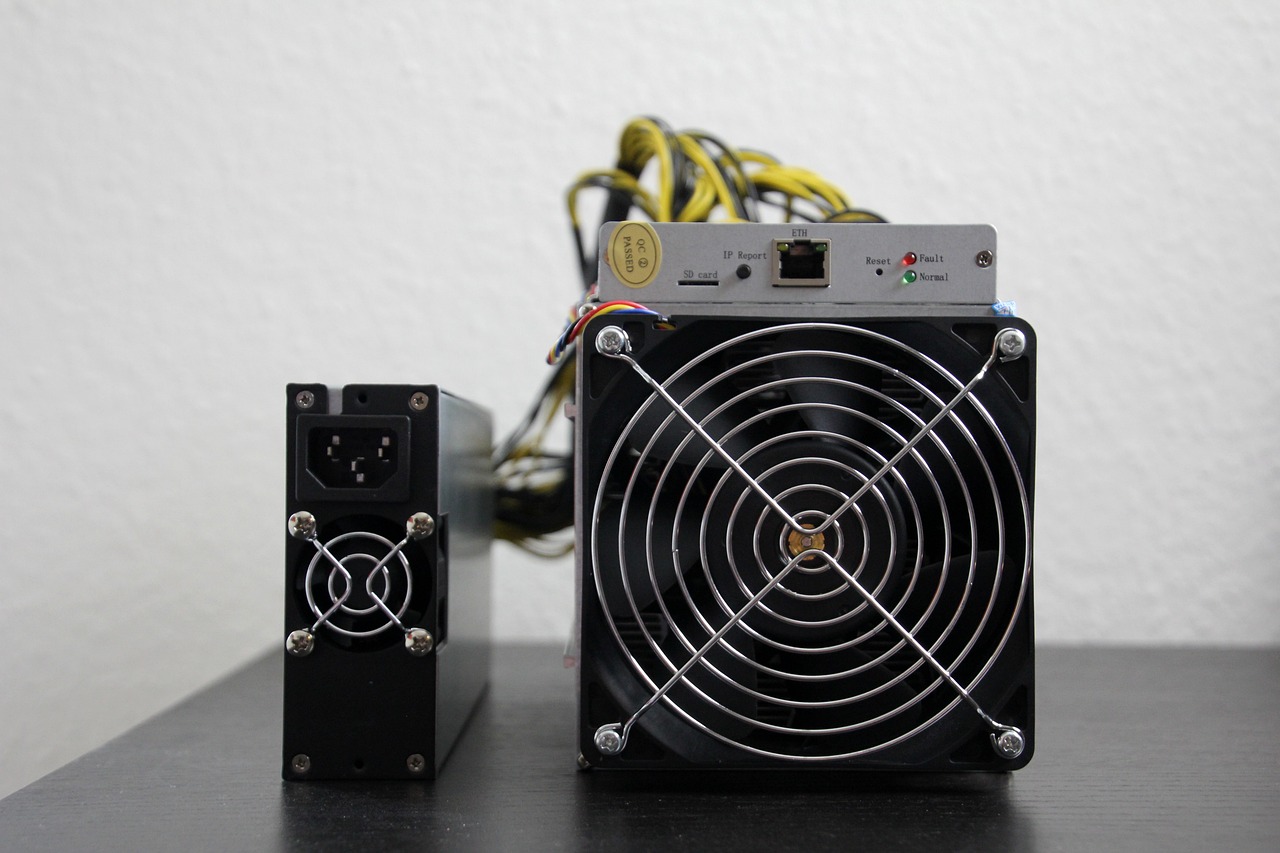
Risk Management Techniques
In the world of cryptocurrency trading, where prices can swing wildly in a matter of minutes, effective risk management is not just a luxury; it's a necessity. The volatility of the market can be both exhilarating and terrifying, making it easy for traders to get swept up in the excitement and make impulsive decisions. However, by implementing robust risk management techniques, traders can protect their capital and maintain a disciplined approach to their trading strategies.
One of the most fundamental aspects of risk management is understanding your own risk tolerance. This means knowing how much you can afford to lose without it impacting your financial stability or emotional well-being. Once you have a clear understanding of your risk tolerance, you can start to develop strategies that align with it. For instance, you might choose to only risk a small percentage of your trading capital on any single trade, which can help mitigate losses during downturns.
Another key technique is diversification. Just like a balanced diet is essential for good health, a diversified portfolio is crucial for a healthy trading strategy. By spreading your investments across different cryptocurrencies, you can reduce the overall risk of your portfolio. If one asset experiences a significant drop, the impact on your overall capital is lessened. For example, consider the following table that illustrates how diversification can work:
| Cryptocurrency | Investment Amount | Potential Loss (20% Drop) |
|---|---|---|
| Bitcoin | $1,000 | $200 |
| Ethereum | $1,000 | $200 |
| Litecoin | $1,000 | $200 |
| Total | $3,000 | $600 |
In this example, if each cryptocurrency drops by 20%, the total loss is $600. However, if all your funds were invested in just one cryptocurrency, the loss would be a full $1,000. This simple strategy of diversification can significantly reduce risk and promote disciplined trading behavior.
Another effective risk management technique is the use of stop-loss orders. These are pre-set orders that automatically sell your asset when it reaches a certain price, limiting your losses. For instance, if you purchase a cryptocurrency at $100 and set a stop-loss order at $90, your losses will be capped at $10 per unit. This allows you to adhere to your trading plan and maintain discipline, even in the face of unexpected market downturns. It's like having a safety net that catches you before you fall too far.
Lastly, it’s important to regularly review and adjust your risk management strategies. The cryptocurrency market is constantly evolving, and what worked yesterday might not work tomorrow. By staying informed about market trends and continuously evaluating your strategies, you can adapt and refine your approach, ensuring that you remain disciplined in your trading efforts.
- What is risk management in crypto trading? Risk management in crypto trading involves strategies and techniques to protect your capital and minimize losses while maximizing gains.
- How can I determine my risk tolerance? Assess your financial situation and emotional response to losses to determine how much risk you can handle.
- What are stop-loss orders? Stop-loss orders are pre-set instructions to sell an asset when it reaches a certain price, helping to limit potential losses.
- Is diversification really effective? Yes, diversification reduces the impact of any single asset's poor performance on your overall portfolio.

Diversification Strategies
Diversification is a vital strategy for any crypto trader looking to maintain discipline and manage risk effectively. By spreading investments across a variety of cryptocurrencies, traders can mitigate the impact of market fluctuations on their overall portfolio. Think of it like not putting all your eggs in one basket; if one cryptocurrency takes a nosedive, others may still perform well, cushioning the blow. This approach not only helps in reducing risk but also fosters a disciplined mindset, as it encourages traders to think critically about their investments rather than acting impulsively.
When implementing diversification strategies, it's essential to consider a few key factors:
- Market Cap: Invest in cryptocurrencies with different market capitalizations. This includes large-cap coins like Bitcoin and Ethereum, mid-cap coins like Chainlink, and small-cap coins that might have higher volatility but also greater potential for returns.
- Technology and Use Cases: Diversify into cryptocurrencies that serve different purposes. For example, some might focus on smart contracts, while others are designed for privacy or decentralized finance (DeFi) applications.
- Geographic Distribution: Consider investing in cryptocurrencies that are popular in various regions. This can help you tap into different market trends and demands.
To illustrate the concept of diversification, here’s a simple table that outlines how a balanced portfolio might look:
| Cryptocurrency | Market Cap Category | Percentage of Portfolio |
|---|---|---|
| Bitcoin (BTC) | Large Cap | 40% |
| Ethereum (ETH) | Large Cap | 30% |
| Chainlink (LINK) | Mid Cap | 15% |
| Cardano (ADA) | Mid Cap | 10% |
| Small Cap Coin (e.g., XYZ) | Small Cap | 5% |
In this example, the trader has allocated their investments in a way that balances risk and potential reward. By including both large-cap and small-cap coins, they can benefit from the stability of established currencies while still having the opportunity for growth with smaller, more volatile assets. This strategic allocation not only promotes disciplined trading but also allows traders to adapt to changing market conditions without losing their cool.
Ultimately, diversification strategies can empower traders to remain disciplined, as they provide a structured approach to investment that minimizes emotional reactions to market fluctuations. By focusing on a well-rounded portfolio, traders can make informed decisions that align with their long-term financial goals, rather than succumbing to the fear and greed that often plague the crypto market.
Q: What is the main benefit of diversification in cryptocurrency trading?
A: The primary benefit of diversification is risk management. By spreading investments across various cryptocurrencies, traders can reduce the impact of a single asset's poor performance on their overall portfolio.
Q: How can I determine the right level of diversification for my portfolio?
A: The right level of diversification depends on your risk tolerance, investment goals, and market knowledge. Generally, a mix of large-cap, mid-cap, and small-cap cryptocurrencies can provide a balanced approach.
Q: Should I diversify into new cryptocurrencies or stick with established ones?
A: It’s wise to include both established cryptocurrencies and new ones in your portfolio. Established coins offer stability, while newer coins may present opportunities for higher returns, albeit with increased risk.
Q: How often should I review my diversified portfolio?
A: Regular reviews are essential. Consider reassessing your portfolio at least quarterly to ensure it aligns with your investment goals and market conditions.
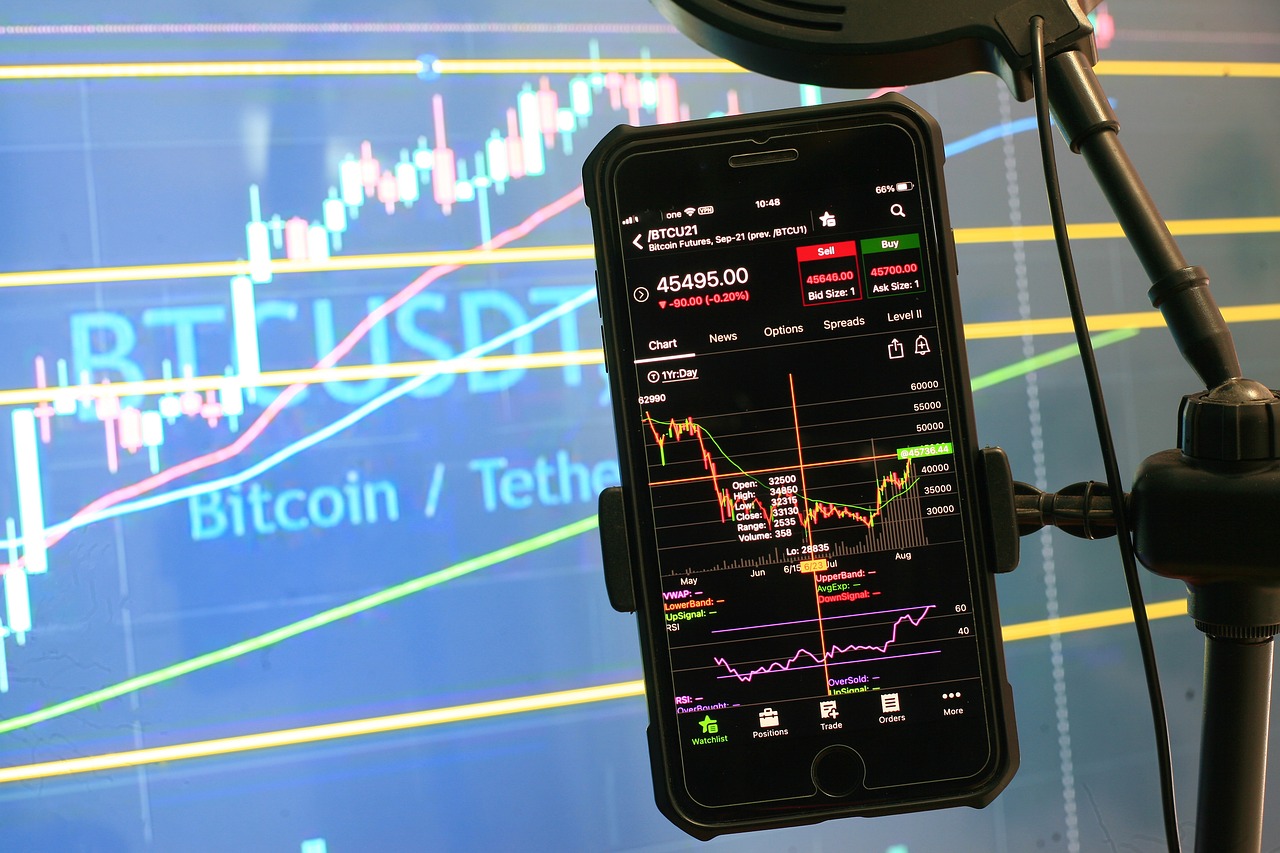
Setting Stop-Loss Orders
Setting stop-loss orders is one of the most effective strategies a crypto trader can employ to maintain discipline and protect their capital. Imagine you're sailing a ship through unpredictable waters; a stop-loss order acts like a safety net, ensuring that if the tide turns against you, you won't capsize. By establishing a predetermined price point at which your assets will be sold, you can limit potential losses and reduce the emotional stress that comes with trading. This preemptive measure allows you to stick to your trading plan, even when the market is throwing curveballs.
But how do you determine the right level for your stop-loss? It's essential to consider both the volatility of the cryptocurrency and your personal risk tolerance. For instance, if you're trading a highly volatile asset, setting a stop-loss too close to the current price might trigger it unnecessarily due to normal price fluctuations. On the other hand, if you place it too far away, you risk losing a significant portion of your investment before the order gets executed. Striking the right balance is crucial.
Here’s a simple approach to help you set effective stop-loss orders:
- Understand Market Volatility: Analyze the historical price movements of the cryptocurrency you’re trading. Look for patterns and determine how much the price typically fluctuates.
- Define Your Risk Tolerance: Decide how much of your capital you’re willing to risk on a single trade. A common rule of thumb is to risk no more than 1-2% of your total trading capital on any one trade.
- Choose a Stop-Loss Method: There are several methods to set stop-loss orders, including:
- Fixed Stop-Loss: Set a fixed percentage below the purchase price.
- Trailing Stop-Loss: Adjust the stop-loss level as the price moves in your favor, locking in profits while still protecting against losses.
Once you’ve established your stop-loss order, it’s crucial to stick to it. The temptation to move your stop-loss further away during a downturn can be strong, but this often leads to larger losses. Remember, the goal is to maintain discipline and avoid emotional trading decisions. Think of your stop-loss as a lifebuoy; it’s there to keep you afloat when the waves get rough.
In addition to setting stop-loss orders, traders should regularly review their strategies and adapt their stop-loss levels based on market conditions. As you gain experience, you’ll find that your ability to set effective stop-loss orders improves, further enhancing your trading discipline.
Q: What is a stop-loss order?
A stop-loss order is a predefined price point at which a trader's asset will be sold to limit potential losses.
Q: How do I determine the right stop-loss level?
Consider the volatility of the asset, your risk tolerance, and the trading strategy you are employing.
Q: Can I change my stop-loss order after setting it?
Yes, you can adjust your stop-loss order as market conditions change, but be cautious not to let emotions dictate your decisions.
Q: What is the difference between a fixed and trailing stop-loss?
A fixed stop-loss remains at a set percentage below the purchase price, while a trailing stop-loss moves up with the price, locking in profits.

Emotional Control in Trading
Managing emotions is absolutely essential for successful trading in the cryptocurrency market. The thrill of watching prices soar can be intoxicating, while the fear of sudden drops can send even the most seasoned traders into a panic. Recognizing emotional triggers is a crucial step in maintaining a disciplined approach to trading. When traders understand what stirs their emotions—be it greed, fear, or even excitement—they can develop strategies to cope with these feelings. This awareness can act as a shield against impulsive decisions that could lead to significant losses.
One effective way to enhance emotional control is by practicing mindfulness. This technique encourages traders to stay present and focused, even when the market is experiencing wild swings. By taking a moment to breathe and reflect during moments of high tension, traders can avoid knee-jerk reactions that might deviate them from their trading plan. Mindfulness can be as simple as stepping away from the screen to clear your mind or engaging in a quick meditation session. It’s about finding that inner calm amidst the chaos.
Moreover, it's important to establish a routine that includes regular emotional check-ins. Just like a pilot goes through a pre-flight checklist, traders should assess their emotional state before making significant trades. This can involve asking oneself questions such as:
- Am I feeling overly confident or anxious?
- Have I done my research, or am I relying on gut feelings?
- Am I prepared to accept the outcome, regardless of whether it’s a win or a loss?
By answering these questions honestly, traders can gain insights into their mental state and adjust their strategies accordingly. Additionally, keeping a trading journal can be beneficial. This journal can serve as a record of not just trades, but also the emotions felt during those trades. Over time, this practice can help identify patterns in emotional responses, allowing traders to develop coping mechanisms that reinforce disciplined trading.
To further support emotional control, consider the following techniques:
| Technique | Description |
|---|---|
| Breathing Exercises | Simple deep-breathing techniques can help ground you during stressful trading moments. |
| Visualization | Visualizing successful trades can boost confidence and reduce anxiety. |
| Setting Realistic Expectations | Understanding that losses are part of trading helps in managing disappointment. |
In conclusion, emotional control is not just a nice-to-have; it’s a fundamental pillar of disciplined trading. By recognizing emotional triggers, practicing mindfulness, and regularly evaluating one's emotional state, traders can create a robust framework that allows them to navigate the turbulent waters of the crypto market with confidence and composure.
Q: How can I better manage my emotions while trading?
A: Start by recognizing your emotional triggers and practicing mindfulness techniques like deep breathing or meditation. Keeping a trading journal can also help you track your emotional responses over time.
Q: What role does mindfulness play in trading?
A: Mindfulness helps traders stay focused and calm during market fluctuations, allowing them to make more rational decisions rather than impulsive ones driven by fear or greed.
Q: Is it normal to feel emotional while trading?
A: Yes, it's completely normal to experience emotions while trading. The key is to recognize and manage these emotions effectively to maintain discipline.

Identifying Emotional Triggers
Understanding your emotional triggers is a pivotal aspect of staying disciplined as a crypto trader. It's like having a map to navigate the turbulent waters of the cryptocurrency market. When you recognize what stirs your emotions—be it fear, greed, or excitement—you can develop strategies to manage these feelings effectively. Think of it as knowing your own personal storm warnings; when you can see the clouds gathering, you have the power to prepare and protect yourself from the impending downpour.
One effective way to identify these triggers is by keeping a trading journal. Documenting your trades, along with your emotional state at the time, can reveal patterns over time. For instance, you might notice that you tend to feel anxious when a coin's price drops suddenly, prompting you to sell prematurely. By recognizing this pattern, you can create a plan to stay calm and stick to your strategy instead of reacting impulsively.
Additionally, it’s important to reflect on specific situations that evoke strong emotions. Ask yourself questions like:
- What events cause me to feel anxious or excited?
- Do I react differently to losses compared to gains?
- How do my emotions influence my decision-making process?
By answering these questions, you can pinpoint the emotional triggers that affect your trading behavior. This self-awareness is crucial in developing coping mechanisms. For instance, if you realize that you often feel overwhelmed during market volatility, you might decide to step back and take a break or practice deep-breathing exercises to regain your composure.
Moreover, sharing your experiences with fellow traders can provide additional insights. Engaging in discussions about emotional challenges can help you see that you're not alone in this journey. You might even discover new strategies that others have successfully implemented to tackle their emotional triggers. Remember, the goal is not to eliminate emotions entirely but to manage them effectively. Just like a skilled sailor knows when to adjust their sails, you too can learn to navigate your emotional landscape, ensuring that you remain disciplined and focused on your trading goals.
- Why is identifying emotional triggers important for trading?
Identifying emotional triggers helps traders understand their reactions to market movements, allowing them to make more rational decisions and maintain discipline. - How can I effectively manage my emotional triggers?
Keeping a trading journal, reflecting on your trading experiences, and practicing mindfulness techniques can help you manage your emotional triggers. - What role does a trading journal play in emotional management?
A trading journal allows you to track your trades and emotions, helping you identify patterns and develop strategies to cope with emotional triggers. - Can discussing emotions with other traders help?
Yes, sharing experiences with fellow traders can provide support and new strategies for managing emotional triggers, fostering a sense of community.
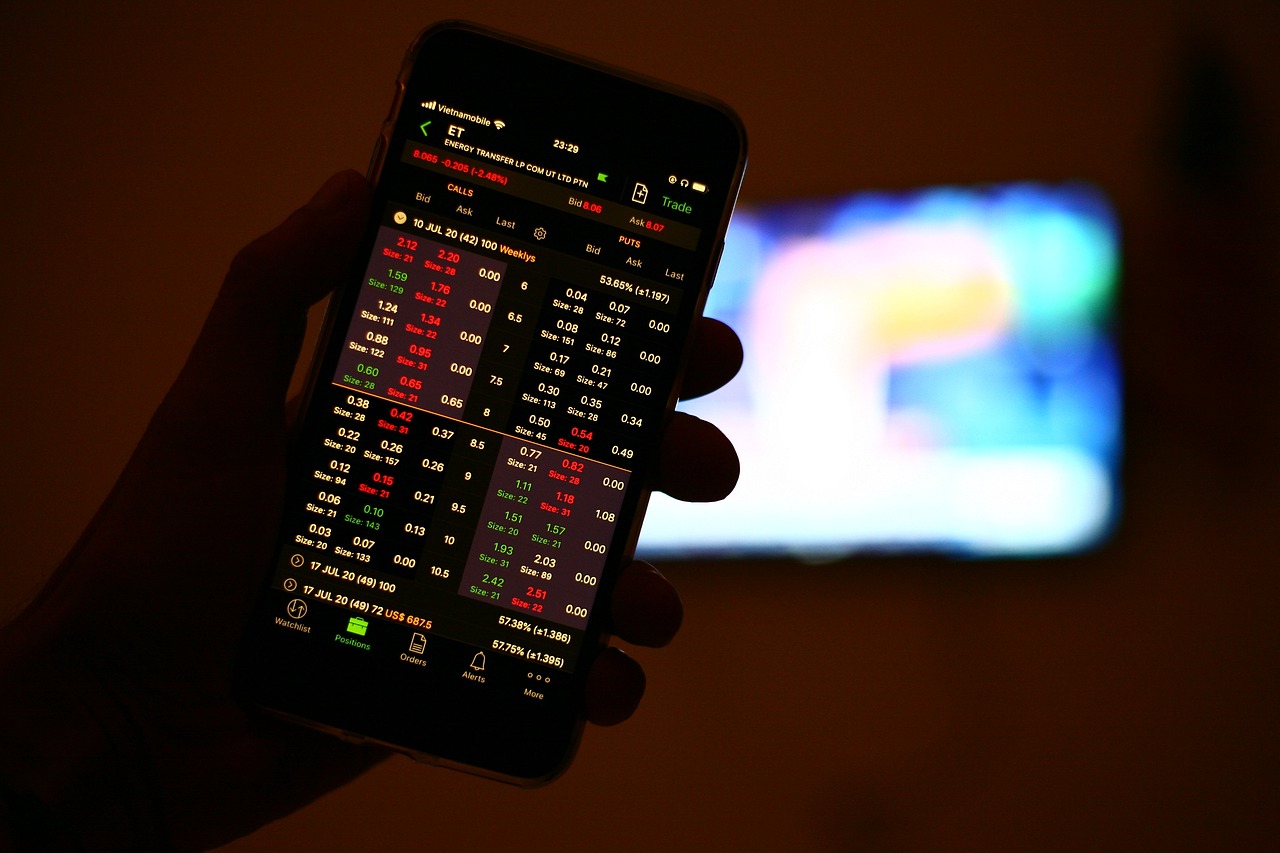
Practicing Mindfulness
In the fast-paced world of crypto trading, can be a game changer. It’s all about being present and aware of your thoughts and feelings without letting them dictate your actions. Imagine you're on a roller coaster, the highs and lows are thrilling, but if you don't keep your wits about you, you might just lose your lunch! Similarly, in trading, if you let emotions like fear or greed take the wheel, you could end up making costly mistakes.
Mindfulness techniques can help you maintain a clear head and stay focused on your trading strategies. Here are a few practical ways to incorporate mindfulness into your trading routine:
- Breathing Exercises: Take a few moments before you start trading to focus on your breath. Inhale deeply, hold for a few seconds, and exhale slowly. This simple practice can reduce anxiety and ground you.
- Journaling: Keep a trading journal where you can jot down your thoughts and feelings about each trade. Reflecting on your decisions can help you identify emotional patterns and triggers.
- Set Intentions: Before each trading session, set a clear intention for what you want to achieve. This can help you stay focused and make decisions aligned with your trading goals.
By regularly practicing these mindfulness techniques, you'll develop a stronger sense of self-awareness and emotional control. This doesn't mean you'll become immune to the volatility of the market, but it does mean you'll be better equipped to handle it. Think of it like building a mental fortress: while storms may rage outside, you remain calm and collected within.
Moreover, mindfulness can enhance your ability to stick to your trading plan. When you're mindful, you're less likely to react impulsively to market fluctuations. Instead of panicking when prices drop, you can assess the situation calmly and make informed decisions. This disciplined approach is vital for long-term success in the crypto market.
In conclusion, practicing mindfulness is not just a trend; it's a necessary skill for any serious crypto trader. By incorporating these techniques into your routine, you can cultivate a disciplined mindset that will serve you well in the unpredictable world of cryptocurrency trading. Remember, it’s not about avoiding the chaos; it’s about navigating it with grace and intention.
Q: What is mindfulness in trading?
A: Mindfulness in trading refers to being present and aware of your thoughts and feelings, allowing you to make rational decisions rather than emotional ones.
Q: How can mindfulness improve my trading performance?
A: By practicing mindfulness, you can enhance your emotional control, reduce impulsive decisions, and maintain focus on your trading strategies, leading to better performance.
Q: Are there specific mindfulness techniques I should use?
A: Yes, techniques such as breathing exercises, journaling, and setting intentions can help you cultivate mindfulness in your trading practice.
Q: Can mindfulness help with market volatility?
A: Absolutely! Mindfulness helps you stay calm during market fluctuations, enabling you to assess situations without panic and make informed decisions.
Frequently Asked Questions
- What is market volatility in cryptocurrency trading?
Market volatility refers to the rapid and significant price fluctuations that are characteristic of cryptocurrency markets. Understanding this volatility is crucial for traders as it can impact their strategies and decision-making processes. It’s like riding a rollercoaster—knowing when to hold on tight and when to enjoy the ride is essential!
- How do I set clear trading goals?
Setting clear trading goals involves establishing SMART criteria—Specific, Measurable, Achievable, Relevant, and Time-bound. This framework helps provide direction and motivation, making it easier to stay disciplined and avoid impulsive decisions. Think of it as creating a roadmap for your trading journey!
- What are short-term and long-term trading strategies?
Short-term strategies focus on quick trades based on immediate market trends, while long-term strategies involve holding assets over extended periods to ride out market fluctuations. Understanding the difference helps you align your trading approach with your risk tolerance and investment goals, ensuring you stay disciplined no matter the market conditions.
- How can I manage risk effectively as a crypto trader?
Effective risk management techniques include diversifying your investments across various cryptocurrencies and setting stop-loss orders. These strategies help protect your capital and ensure you stick to your trading plans, even when the market gets choppy. It’s all about safeguarding your treasure while navigating the crypto seas!
- Why is emotional control important in trading?
Emotional control is vital in trading because it helps prevent rash decisions driven by fear or greed. By recognizing your emotional triggers and practicing techniques like mindfulness, you can maintain focus on your strategies, promoting a disciplined trading mindset. It’s like having a steady hand while painting a masterpiece—every stroke counts!
- What are some coping mechanisms for emotional triggers?
Identifying your emotional triggers is the first step to developing coping mechanisms. Techniques such as deep breathing, taking breaks, and reflecting on past trades can help you manage your emotions effectively. This way, you can keep a cool head and make more rational decisions, even when the market is in turmoil.




